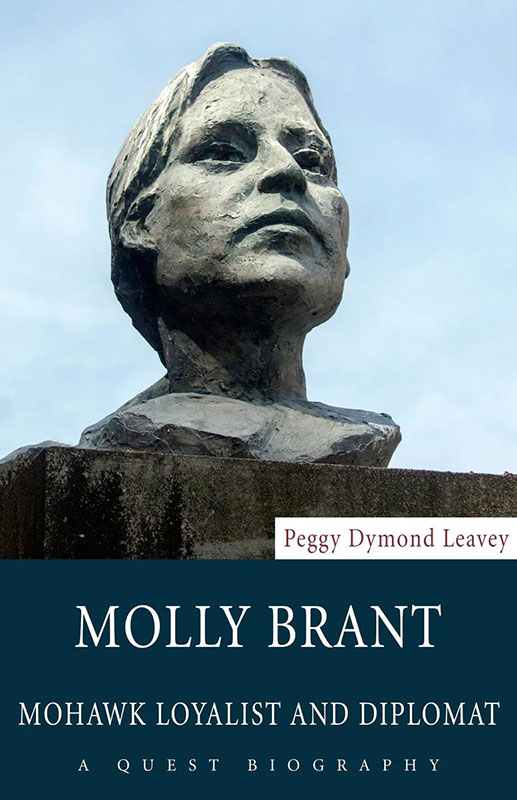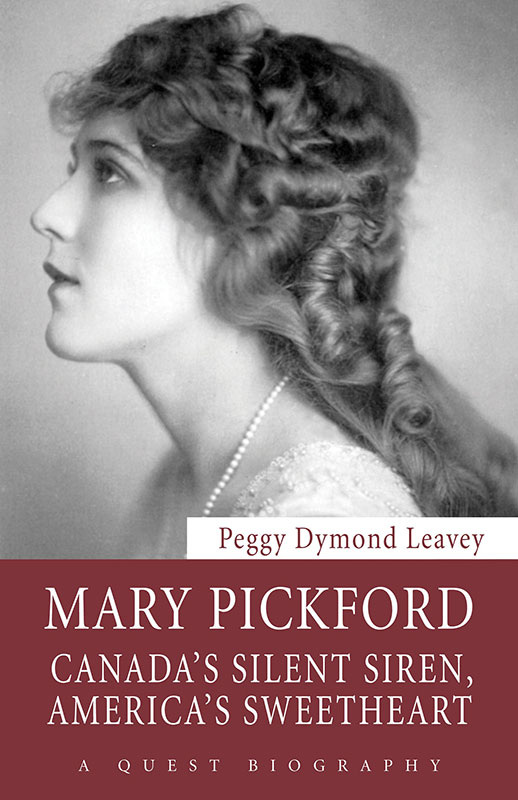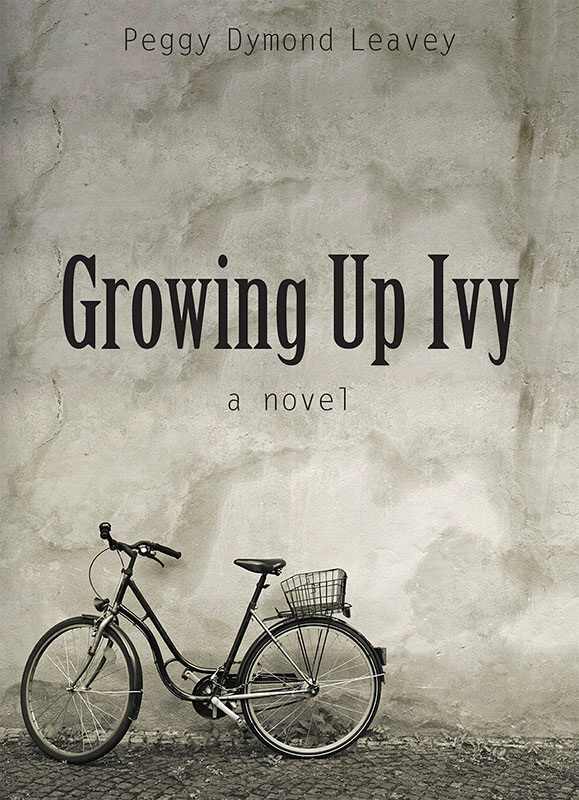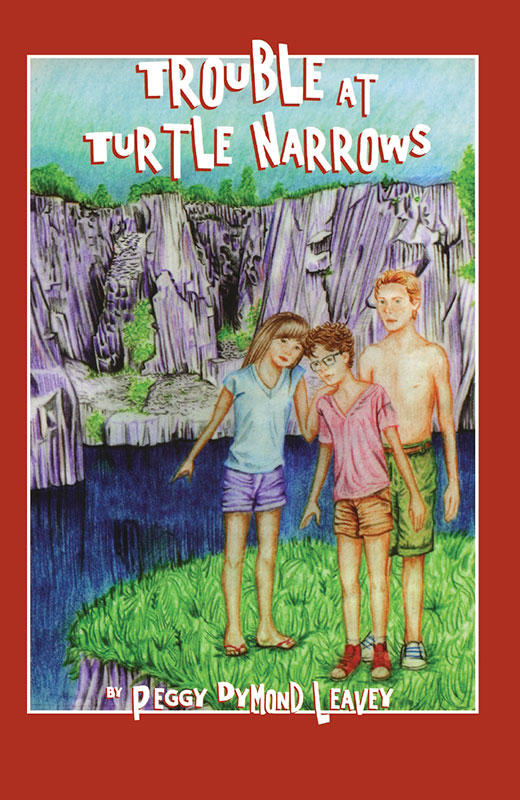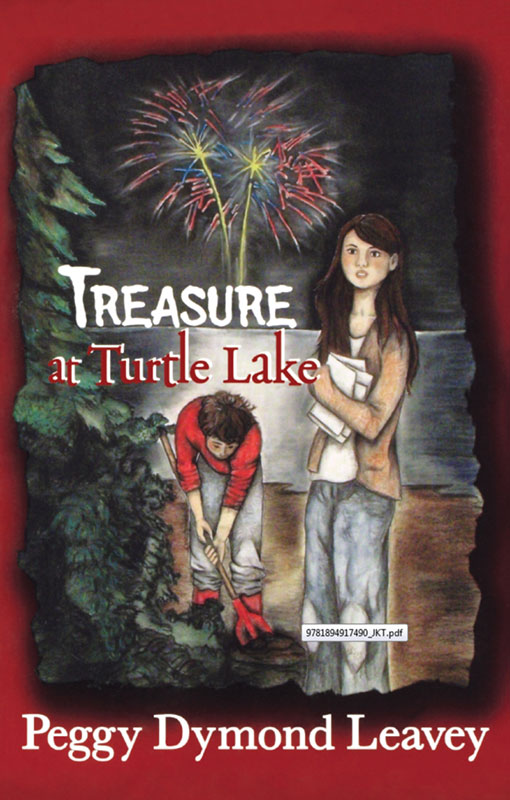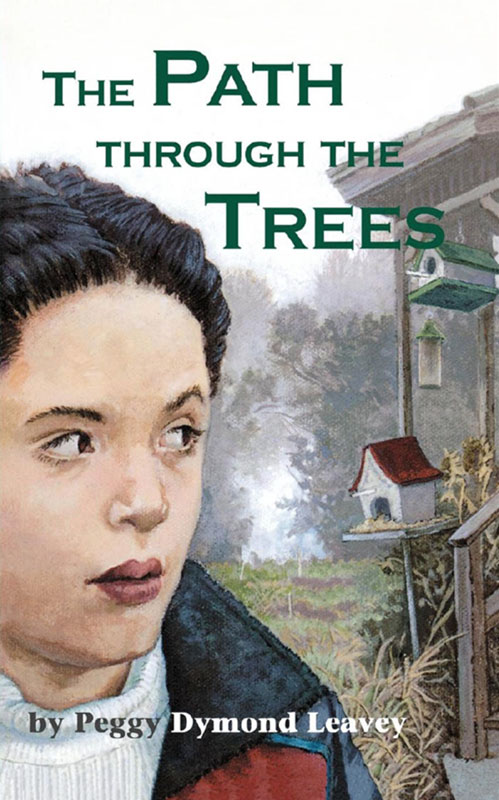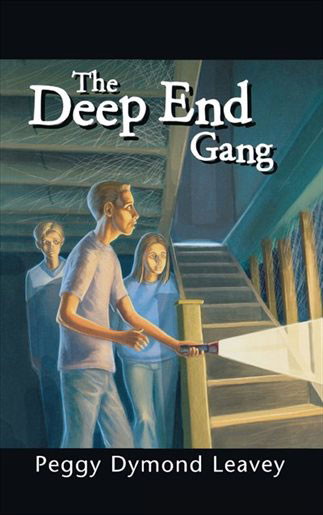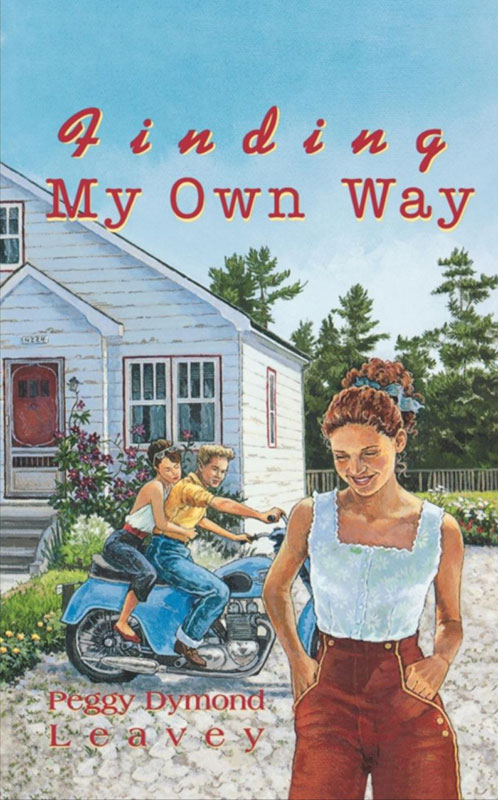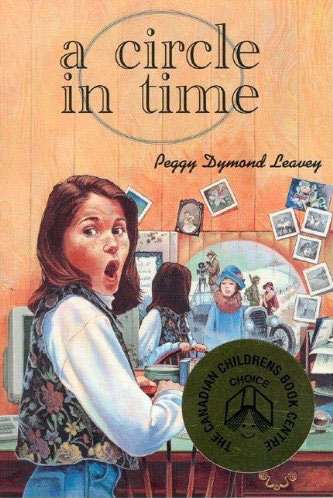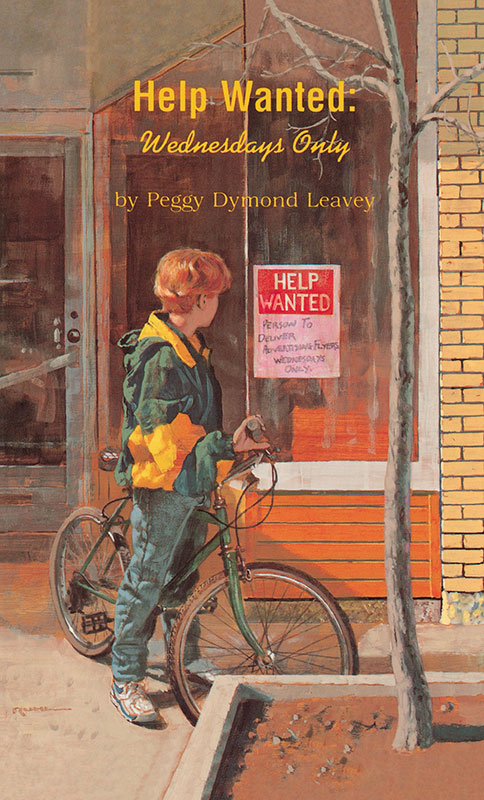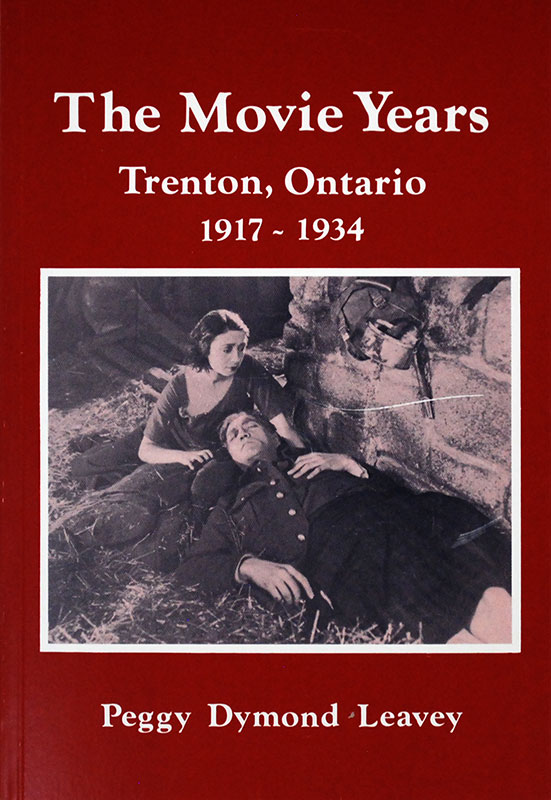Books
Molly Brant: Mohawk Loyalist and Diplomat
A Quest Biography Book
ISBN 978-1-45972-8936
176 pages, Paperback.
Published in April, 2015
Available at:
Dundurn Press
Amazon.ca
A respected Mohawk matron, Molly became a vital link between her people and the Canadian Indian Department. Like her brother Joseph, she worked hard to keep five of the Six Nations on the side of the British throughout the war, believing the empty promises that all would be restored to them once the conflict ended. Although she was seen as fractious and demanding at times, her remarkable stamina and courage gained the respect of white men at the highest level in Canadian government.
Click here to read an excerpt from the book
Excerpt from
Molly Brant: Mohawk Loyalist and Diplomat
The Mohawk River flows east for most of its journey through central New York State. It links Molly Brant’s homeland by way of a system of lakes, rivers, and creeks to Lake Ontario at Oswego and to the St Lawrence via the Hudson River, Lake Champlain, and the Richelieu.
The foothills of the Adirondack Mountains lie north of the Mohawk Valley, and the melting snow from their peaks feeds the region’s many creeks and streams. On the river’s south side, along Schoharie Creek, is the country that has been home to the Mohawk people for thousands of years.
While she was growing up, many of Molly Brant’s neighbours were white settlers. One of those neighbours and a frequent visitor at the home of her mother, Margaret, and her stepfather, Brant Kanagaradunka, was William Johnson, who lived on the edge of Mohawk territory, west of Schenectady.
Irish-born William Johnson had arrived in Mohawk Valley in 1738, hired by his uncle to manage his 13,000 acre estate. In 1746 New York Governor George Clinton put him in charge of Indian Affairs. Johnson had won the confidence of the Natives through his fair treatment of them, and they preferred dealing with him than with the merchants and traders in Albany.
Along with other Mohawk youths, Molly and her brother Joseph may occasionally have visited William Johnson’s estate to participate in the outdoor games and events Johnson liked to hold. And it wasn’t long before the attractive stepdaughter of his friend Brant Kanagaradunka caught the eye of William Johnson.
Laura Secord: Heroine of the War of 1812
A Quest Biography Book
ISBN 978-1-45970-366-7
192 pages, Paperback. $19.99
Published in May, 2012
Available at:
Dundurn Press
Amazon.ca
Through an outstanding act of perseverance and courage in 1813, Laura walked an astonishing 30 kilometres from her home to the British outpost to warn Lieutenant James FitzGibbon. Despite facing rough terrain, the ever-present danger of being caught by American troops, and rather delicate encounters with Native forces, Laura reached FitzGibbon in time for the British to prepare and execute an ambush on the advancing American military, forcing the U.S. general to surrender.
Laura lived a very long time, dying at the age of 93. In her lifetime the government never formally recognized her singular feat of bravery, and some controversy still envelopes her legacy.
Click here to read an excerpt from the book
Excerpt from
Laura Secord: Heroine of the War of 1812
It was decided that Laura should leave on her mission to warn the British outpost early the next morning. In case the American attack was imminent, she had to get to Beaver Dams in time for British Lieutenant FitzGibbon to mount a counterattack.
There would have been little sleep for Laura that night. Convinced she was doing the right thing, she’d still be mulling over in her mind the safest route out of Queenston, well aware that if she were captured the penalty for spying was death by firing squad.
Before dawn on June 22 she got up, and in the dark readied herself to leave the house, putting on the clothing she’d chosen the previous evening: a brown cotton house dress she’d made herself. The long straight skirt of the dress fell from a high waist, and with its elbow-length sleeves it would be cool enough. Over her shoulders she knotted a kerchief of light muslin, and slid her feet into her usual pair of low-heeled, kid leather slippers, tying them securely at the instep.
Before leaving the room she plucked a cotton sunbonnet off the peg to protect her fair complexion later in the day.
For a moment Laura stood looking at her sleeping children, wishing she could say goodbye to them. But there’d been so much coming and going in the house since the American occupation that it seemed as if even the walls had ears. She couldn’t risk any noisy chatter at this hour. She tiptoed from the room without waking her brood and creaked open the door.
After the door had closed softly behind her, Harriet, who had turned ten that February, slipped out of bed and went to the window. She was the only one who saw Laura leave. It was about 4:30 a.m.
Mary Pickford: Canada’s Silent Siren, America’s Sweetheart
A Quest Biography Book
ISBN 978-1-55488-945-7
192 pages, Paperback. $19.99
Published in September, 2011
Available at:
Dundurn Press
Amazon.ca
She was an actor, director, producer, film executive, one of the founders of United Artists and the Academy of Motion Picture Arts and Sciences—the most important woman in the history of motion pictures.
Mary Pickford’s ambition, passion, innate talent, and savvy business acumen sent her career into the stratosphere and set the blueprint for the modern movie star. Pickford was raised in a house on University Avenue in Toronto and began her acting career on the stage. However, her determination led her to the new world of motion pictures, where she not only revolutionized acting method but negotiated her own terms for the highest salary for any actress and complete creative control over her films.
Pickford co-founded United Artists in 1919 with Douglas Fairbanks and Charlie Chaplin, which turned the existing studio system on its head. The actress’s subsequent marriage to Fairbanks incited a fan frenzy comparable to today’s obsession with couples like Brad Pitt and Angelina Jolie. Although Pickford’s star faded with the advent of talking pictures, she was the catalyst for the culture of Hollywood celebrity that enthralls us today.
Click here to read an excerpt from the book
Excerpt from
Mary Pickford: Canada’s Silent Siren, America’s Sweetheart
Mary believed that nice people didn’t go to nickelodeons. Theatre actors, like herself, considered the flickers “low class.” And to play in a moving picture would be the final choice for a desperate actor who’d run out of options.
But demand for films had become huge. In 1909, there were thousands of nickelodeons in America, each one showing a variety of subjects on short films. The programs, which usually ran for an hour or an hour and a half, changed daily.
Charlotte, Mary’s mother, had been listening to some of the other stage actors talk about how they’d worked the previous summer at Biograph, the leading film company in New York. Apparently, it was possible to make a quick $5 a day there.
Whereas the stage productions shut down for the summer because the theatres got too hot, the voracious appetite created by the nickelodeons meant filming went on year round.
Charlotte broached the subject to her eldest daughter. “Would you be very much against applying for work at the Biograph studio, Mary?”
Go into the movies? Mary was incredulous. How demeaning! She was a serious actress; movies were beneath her dignity.
But a job in moving pictures would mean the four Pickfords could stay together in New York for the summer, and Charlotte wasn’t long in pointing that out. Besides, “They pay as much as five dollars a day.”
Charlotte wasn’t above a little bribery. If Mary would agree to try her luck at Biograph, her mother would allow her to wear a pair of silk stockings for the first time. And a pair of high-heeled shoes.
Because she always obeyed Charlotte, Mary swallowed her pride. She dressed in her navy blue serge suit, striped shirtwaist, and a new, rolled brim straw hat, and boarded the streetcar to West 14th Street.
She had planned her route to the Biograph studio very carefully, in order to spend only one nickel on the cross-town trolley. Why would she waste precious money on such a pointless trip, anyway? She would step inside the hated studio, pay the call she’d promised her mother she would, and get out of there as quickly as she could.
Close
Growing Up Ivy
ISBN 978-1-55488-723-1
Young Adult Historical Fiction. Paperback. $12.99
Curriculum Links:
Character Education;
Social Studies – Canadian Content, Canadian History – Toronto (Ont.), Depression-1930s-Ontario, actors & acting, peddlers;
Language Arts – Novel Study, Juvenile Fiction.
Themes: Friends & family, fathers & daughters, adolescence, family secrets, acceptance.
Available at:
Dundurn Press
Amazon.ca
In 1931, Frannie, intent on making a name for herself on the New York City stage, sends Ivy to Larkin, Ontario to stay with her paternal grandmother, someone the girl has never met.
When Ivy’s father, Alva, arrives unexpectedly, he turns out not to be the Prince Charming she imagined, but an illiterate peddler. Rescuing Ivy from her uncompromising grandmother, Alva takes her with him for the summer, wandering the countryside by horse-drawn caravan, selling shoes.
Back at her grandmother’s, at summer’s end, Ivy meets teenager Charlie Bayliss, orphaned as an infant and raised by his aunt on a farm outside Larkin.
Ivy has a flair for writing and boundless imagination; Charlie loves baseball and loathes farming. Unknown to both of them, though, is a secret connection they share. When the final pieces of the puzzle of their lives fall into place, nothing will ever be the same.
Click here to read an excerpt from the book
Excerpt from
Growing Up Ivy
“Summer’s pretty near over,” Alva said one evening, stirring the campfire with a stick of kindling. “I think we should take the shortest route home now, get you back to your grandmother’s before the end of August.”
It was the last thing Ivy wanted to hear. She felt like a deflated balloon. Hugging her knees to her chest, she hid her face from her father.
“Your grandmother will want to help get you ready for school, child,” Alva said, his voice soft. “What grade will you be going in?”
“I don’t know,” Ivy said. “Junior Fourth, I guess. I don’t always go to school.”
“Ivy, look at me. Why not?”
She raised her head and gave a shrug. “Because Momma and I have to move sometimes. I just get started at one school, and then we’re off again to a new place. Anyway, school seems like a waste of time to me. I can learn more out of the books I get at the library.”
“School’s important, Ivy. Take that from someone who didn’t get enough of it.”
“Well, Grandmother told me that these days even lawyers are selling brushes door-to-door.”
“Likely true enough.” Alva tossed the stick into the fire, causing a shower of sparks.
“What I really want to do is write, Papa,” Ivy said, with passion. “I want to be a writer. I have stories in my head just bursting to get out.”
“Pretty sure a writer needs to go to school,” said Alva.
Trouble at Turtle Narrows
ISBN 978-1-894917-71-1
Juvenile Fiction. Paperback. $9.95
Curriculum Links:
Character Education;
Social Studies – Canadian Content, Canadian History – Ottawa Valley (Ont.) – Lumber Industry, Caring for Animals, Volunteering;
Language Arts – Novel Study, Juvenile Fiction – Detective & Mystery Stories.
Themes: Friends & family, summer, adolescence, responsibility.
Available at:
Dundurn Press
Amazon.ca
Chapters.Indigo.ca
After a rocky start to the summer in Turtle Narrows, things are beginning to turn around for 13 year old Joel Osler. He has a dog of his own now, a black Labrador retriever named Molly, and the family has just moved into the old Clifton House.
Dropping into his dad’s electronics shop one day, Joel overhears a stranger demanding money. Suddenly, it looks as if Dad’s financial troubles could mean losing the house and moving back to the tiny flat over the shop. If that happens, Joel won’t be able to keep his dog. With a For Sale sign already on the Clifton House, Joel is desperate for a solution.
On a fishing expedition into Algonquin Park, Joel and his friends, Paige and Matt, make a grisly discovery. When Joel’s dad becomes a suspect, Joel must take immediate action to prove his innocence.
Click here to read an excerpt from the book
Excerpt from
Trouble at Turtle Narrows
I decided to stop in at Dad’s store to see if he was ready to leave. Stepping inside, I thought at first that the place was empty, but then I heard voices coming from the workshop in the back. It was the tone of those voices that alerted me to trouble.
One of the speakers was my father; I didn’t recognize the other man’s voice. There was a hard edge to it, though. You could tell he meant business.
“Look,” Dad was saying, “we agreed that’s how I’d pay you. Have I ever been late with a payment?”
“The situation has changed,” the other man said gruffly.
I hesitated, my hand still on the door handle. Should I leave? I was sure this was a private conversation, but if my dad was in some sort of trouble, I felt I should know about it.
“Please don’t do this,” I heard my father say. “Our arrangement has always worked well. We’ve never had any trouble, have we?”
“I need the rest of the money,” the other man said. “It’s as simple as that. And I need all of it.”
“But I just can’t!” my dad argued. “My wife and I have just bought a house. We were counting on the arrangement between you and me to continue as it always has. You never gave me any indication before this..”
“Thirty days,” the man said, his voice like coarse sandpaper.
Treasure at Turtle Lake
ISBN 978-1-894917-49-0
Juvenile Fiction. Paperback. $9.95 Cdn
Curriculum Links:
Character Education;
Social Studies – Canadian Content, Family Breakdown, Shoplifting, Relationships (stepmother), Caring for Animals, Volunteering;
Language Arts – Novel Study, Juvenile Fiction – Detective & Mystery Stories.
Themes: Dealing with anger & resentment, admitting one’s mistakes, responsibility, learning to make new friends in a new place, school relationships, guilt & innocence, teamwork.
Available at:
Dundurn Press
Amazon.ca
Chapters.Indigo.ca
On his trip north, he meets a mysterious man who shows him a map. Could this map point the way to hidden treasure?
Joel finds an unlikely ally in fiercely independent Paige, a new Grade Seven classmate. When Joel shows Paige the drawings he remembers from the map, the two team up to match wits against the man, hoping to discover the meaning of the three clues before he does.
Click here to read an excerpt from the book
Excerpt from
Treasure at Turtle Lake
Night had fallen while we worked and with the cooler air, fingers of fog began to edge towards us. I could hear the gentle slap of water against the dock, and smell the slightly fishy odour that rose from the lake.
Suddenly, a giant shower of red and gold stars broke over our heads. There was a loud boom, and the ground under our feet reverberated. “They’ve started the fireworks already!” Paige cried.
More fireworks crackled across the sky over the lake, bathing the scene around us with light. And in that light, we saw a small motor boat with a single occupant approaching the beach below us.
“It’s him!” I cried.
The Path Through the Trees
ISBN 1894917219
Juvenile Fiction. Paperback. $8.95 Cdn.
Curriculum Links:
Character Education;
Science & Technology – Birds & Birdfeeders;
Social Studies – Canadian Content, Relationships. Language Arts – Novel Studies, Juvenile Fiction – Ghost Stories, Juvenile Fiction-Christmas Stories, Juvenile Fiction – Family Stories.
Themes: Family relationships, cousins, winter.
Available at:
Dundurn Press
Amazon.ca
Chapters.Indigo.ca
When Ginny gets called away on business, Norah has to go on her own to stay with Miss Stoppard, someone she has never even met.
From the start, the woman makes it plain that she does not welcome Norah’s company, nor that of Andrew and Becca, Norah’s cousins, who arrive two days later.
The isolated Stoppard mansion is as dismal as the Ontario winter. But the cousins discover there are puzzles to solve. Great-aunt Caroline has many secrets. Among them is the identity of the boy Norah sees in the backyard. Who is he? And why is he watching the house?
The Path Through the Trees was nominated for the 2007 Silver Birch Award, as well as the 2007 Manitoba Young Readers’ Choice Award.
Click here to read an excerpt from the book
Excerpt from
The Path Through the Trees
Norah took a quick step away from the window where she’d been surveying the yard and nearly collided with Aunt Caroline, who chose that exact moment to come through the swinging door from the kitchen.
“My goodness!” exclaimed the woman, irritable, “Don’t jump out at me like that!”
“Sorry,” said Norah. “I was just looking at your backyard. For a minute, I thought I saw someone out there.” After a second glance she wasn’t so sure.
“I doubt it,” Aunt Caroline sniffed. “No one comes out this far, especially in the rain.”
Great Aunt Caroline wiped her hands on the striped apron she wore and reached behind the drapes to switch off the outside lights. Immediately, the scene beyond the window jumped back, leaving only their reflections in the glass and that of the room around them.
Could Norah have imagined the boy she saw standing there? She had only seen him for a moment. But why would her eyes play tricks on her?
The Deep End Gang
ISBN 092914189X
Juvenile fiction. Paperback. $8.95 Cdn.
Curriculum Links:
Character Education;
Social Studies – Canadian Content, Military Families, Rural Communities;
Language Arts – Novel Study, Juvenile Fiction-Detective & Mystery Stories.
Themes: Moving, learning to make new friends in a new place, sisters, truth, acceptance.
Available at:
Dundurn Press
Amazon.ca
Chapters.Indigo.ca
Settling into his new home, Martin is intrigued by a deserted house across the street and by an unfriendly neighbour, who seems to be waiting for something to happen.
Martin and new friends Granger and Holly form a club that meets in the deep end of an empty swimming pool. The friends tell Martin that the deserted house is all that remains of the Govier estate and about an unsolved mystery–the disappearance years ago of Victor Govier.
One night, Martin sees a light in the deserted house. When the Deep End Gang goes to investigate, the kids discover an unlocked door leading into the cellar.
Click here to read an excerpt from the book
Excerpt from
The Deep End Gang
Holly led us through the video store parking lot to an opening in the chain-link fence that separated the back of the plaza and a wooded area. We followed a narrow, worn path along the edge of the trees.
“This eventually comes out at Townline Road,” Holly informed us. She was in front, and Granger was stumbling along behind me. It was dark now, and the only light came from the back of the plaza. The stench from an overflowing dumpster permeated the air.
“I’m not supposed to take this shortcut,” Granger announced suddenly.
At that, Holly stopped so quickly that I walked into her. “Oh, my gawd! That’s right!” She clapped a hand over her mouth. “This is exactly where it happened, isn’t it?”
“On the other side of the fence,” groaned Granger. “Don’t stop. Keep walking! Geez, Holly,” he whined, “why didn’t your mother come and get us?”
I took my eyes off the path long enough to see that we were directly behind the drive-through for the Dairy Dipt. Everything seemed okay to me, except for the smell.
We could hear the crackling tones of the girl on the speaker, telling the customer that his bill came to five dollars and thirty cents, and to “please drive ahead.”
“What happened?” I asked. “What are you talking about?”
“Come on,” barked Holly. “I’ll tell you later. We’ve got to hurry.”
We were walking up the back of one another’s heels by the time we emerged from the underbrush at the lights of Townline Road, the main thoroughfare to our subdivision. Now we were able to walk on the grassy shoulder, where the passing traffic provided some movement of the stifling air. “Okay, now tell me,” I demanded.
“Well, it happened like this,” Holly began, dramatically. “One night, a man who owned one of the businesses in the plaza was murdered.” In spite of the heat, goose bumps sprang out on my arms and legs. “It happened right there at the back door to his business. The other employees had all left, and he was just locking up. He had the days receipts with him and was about to cross the parking lot and get into his car.”
“But,” Granger took up the story, “he never got there! Next day, there were signs of a struggle, but all they found were his reading glasses in the long grass next to the fence.”
Finding My Own Way
ISBN 0929141830
Young adult fiction. Paperback. $8.95 Cdn.
Curriculum Links:
Character Education;
Science & Technology (Applied Science) – Alcoholism;
Social Studies – Canadian Content, Journalists, Sexual Harassment, Employment, Urban & Rural Communities;
Language Arts – Novel Study, Juvenile Fiction-Historical-Russia (1917)-Royal Family – Anastasia.
Themes: Self-reliance, friendship, dealing with grief, life skills, adolescence, courage, perseverance.
Available at:
Dundurn Press
Amazon.ca
Chapters.Indigo.ca
Click here to read an excerpt from the book
Excerpt from
Finding My Own Way
“Do you know how to weigh out candy?”
“Not yet,” I admitted.
“Come on over to the candy counter, then. I’ll get Gloria to show you. You can help her there this afternoon. We’ve had a new shipment, and I just brought some cases to her on the dolly. The bins will all need filling.”
I followed him down the creaking floor to a block of glass cases. “Hey, Blondie,” Bobby greeted a pretty girl who was wiping finger marks off the front of the glass. “I brought you some help.”
Gloria straightened up and gave me a friendly smile. The assistant manager moved in closer to her. “Now don’t say I never do anything for you.” His voice was a husky growl.
With a town as small as Pinkney Corners, I’d seen Gloria Hooper around, but I didn’t know her personally. She was, I discovered, fun to work with. She had a lively sense of humour and kept up a constant chatter while we opened boxes and scooped candy into the compartments in the glass-fronted case. She was eager to make me feel right at home. Gloria knew all the staff and the regular customers and seemed to know everything about them. Working with her made the afternoon hours fly past.
The first time I saw Gloria pop a French cream into her mouth, I was horrified. “My favorites,” she grinned mischievously. With her pink circle skirt, her white blouse, her hair blonder than blonde, she looked like a piece of candy herself.
“You’re allowed to eat them?” I asked.
“Sure. Everybody does. Just don’t let Freddie Forth catch you. But if Bobby’s on, he’s the worst one of the lot. Comes in and grabs a whole handful of the mixed nuts.” Her face darkened. “Just watch out that’s all he grabs,” she finished, cryptically.
“Let me give you a word of advice about that one,” Gloria said in a conspiratorial tone, as we broke open a carton of butterscotch wafers under the counter. “Watch out.”
“Oh?” I queried cautiously, aware of being the newcomer here and not knowing what the relationship between these two might be. “He seems very friendly.”
Gloria snorted at my observation. “That’s the understatement of the year! He’s engaged to a girl in the town where he took his training. Karen comes in to check on him sometimes. Would you believe I’d gone out with him three times before he told me about their engagement? So, you be careful. Especially seeing as you’re new. You’ll have to make it plain to him that you’re strictly business.” She gave me a knowing look. “Unless you aren’t.”
“He’s not really my type,” I said, thinking of Michael.
Sky Lake Summer
ISBN 0929141644
Juvenile fiction. Paperback. $7.95 Cdn.
Curriculum Links:
Character Education;
Social Studies – Canadian Content, Young Offenders;
Language Arts – Novel Study, Juvenile Fiction – Detective & Mystery Stories, Juvenile Fiction – Suspense Stories.
Themes: Summer (cottages), grandparent & child, family relationships, friendship, adolescence, acceptance.
Available at:
Dundurn Press
Amazon.ca
Chapters.Indigo.ca
 Sky Lake Summer was an “Our Choice” selection by the Canadian Children’s Book Centre, as well as being nominated for a Silver Birch Award in 2000. Other nominations include a Manitoba Young Readers’ Choice Award and a Tiny TORGI Audio Award in 2000.
Sky Lake Summer was an “Our Choice” selection by the Canadian Children’s Book Centre, as well as being nominated for a Silver Birch Award in 2000. Other nominations include a Manitoba Young Readers’ Choice Award and a Tiny TORGI Audio Award in 2000.Click here to read an excerpt from the book
Excerpt from
Sky Lake Summer
The girls circled the inside perimeter slowly, reverently, reaching out every now and then to touch the cool stones.
“Nell said the house burned down.” Corrie was the first to break the silence. “Away up here though, who could’ve helped them put the fire out?” She stopped, clapping a hand over her mouth. “Oh, Jane! You don’t suppose Eugenie and her baby died here?”
Jane looked up, suddenly chilled, expecting to see that the sun had gone behind a cloud. But the afternoon sky was as clear as it had been all day.
“Jane, where are you going?” Corrie whirled around as Jane hurried past her and out through the front doorway. She caught up with her outside. “Are you okay? You look kind of funny.”
“I’m okay,” said Jane cautiously, because the uneasiness, which had made her flee the house, was still upon her. She lowered herself onto the rock and wrapped her arms around her knees, hugging them to her, shivering uncontrollably.
A Circle In Time
ISBN 0929141555
Juvenile fiction. Paperback. $6.95 Cdn.
Curriculum Links:
Character Education; Social Studies – Canadian History – Trenton (Ont.) – Motion Picture Industry;
Language Arts – Novel Study, Juvenile Fiction – Historical, Juvenile Fiction – Time Travel, Juvenile Fiction – Christmas Stories.
Themes: Family relationships, twins, grandparents.
No longer available:
Out of Print
Click here to read an excerpt from the book
Excerpt from
A Circle In Time
The rooms across the hall from the gallery which overlooked the massive stage were disappointing. I’d hoped to find rows of lights over the dressing tables, lots of make-up bottles and racks of fancy costumes, the kind of behind-the-scenes view I’d seen in magazines. None of those things were there now. I could only imagine what it might have been like. The empty walls were all the same shade of dirty yellow, the paint scarred where fixtures had been removed. The small windows let in a minimum of late afternoon light.
Several sections of a long mirror had been torn off the wall, and I moved through the room to where one remained, mottled and cracked, the last in the line which must have stretched the length of the make-up table.
I dusted its surface with my hand, thinking of the actors and actresses who might have gotten ready to play their movie roles in front of the mirror. I’d seen pictures of early film stars– women with hair in row after row of tiny little waves, single curls glued to their cheeks, mouths like red valentines. And dreamy-eyed men with sad smiles.
Suddenly, without having heard anyone approach, I saw in the mirror that there was someone behind me. A man. I turned around quickly, but to my surprise, no one was there. The room was empty. Sunlight flared for a moment through the windows. Had my eyes played tricks on me? I turned back to the mirror again.
Someone was reflected there. He was wearing a soft, cloth cap of a beige tweed material that sat at an angle over deep-set brown eyes. Heavy eyelids drooped at the corners, and deep lines ran past his mouth to his chin. It was a sad face rather than one that would frighten me. He just stood there, motionless. And then, while I stared, the figure faded and became nothing.
Help Wanted: Wednesdays Only
ISBN 0929141237 English ISBN 274272303X French (available through Amazon.ca)
Juvenile fiction. Paperback. $6.95 Cdn.
Curriculum Links:
Character Education;
Science & Technology (Applied Science) – Alzheimer’s Disease;
Social Studies – Canadian Content, Urban Communities, Ethnic Communities, Grandparents (Italian);
Language Arts – Novel Study – Juvenile Fiction.
Themes:
Responsibility, friends & family, school relationships, bullies, courage, compassion, respect, teamwork.
Available in French as Un Petit Boulot du Mercredi (ISBN 978-2-7427-2303-4) from Actes Sud and from amazon.ca .
Available at:
Dundurn Press
Amazon.ca
Chapters.Indigo.ca
Disponible en français comme Un Petit Boulot du Mercredi (ISBN 978-2-7427-2303-4) d’Amazon.ca.
Recommended reading by the Alzheimer Society of Canada.
Click here to read an excerpt from the book
Excerpt from
Help Wanted: Wednesdays Only
“Whoa, Mark! Isn’t that your grandfather?” A black and white police cruiser was parked at the curb outside my building. Jason bent down for a closer look.
At first, the glass in the window only reflected our two bewildered faces, pale and pinched from the bitter March wind. Then my heart sank. It was Grandpa. How could he do this to me? Again.
“Mark Rogers?” One of the officers got out to the car onto the sidewalk.
“Look, Mark,” gulped Jason, “I gotta go. Okay? I’ll call you later.” And he scurried away up the street.
It wasn’t that Jason was a chicken or anything like that. He just knew how to stay out of unpleasant situations. I was glad it had only been Jason with me. He already knew about my grandfather. I was glad it hadn’t been Nicole or someone else I was trying to impress. Not that Nicole Somers would be walking home with a shrimpy kid like me anyway. But I sure didn’t want any of the kids at school to see my grandfather getting out of a police car. In his pajamas.
I could feel my face burning with shame as I led the officers up to our apartment.
“Must’ve walked all the way over here from his place,” one of them said, waiting while I unlocked the door. “Found him wandering around about three blocks away.”
“Have your mother call us,” the other officer directed, seeing us both safely inside.
I closed the door and stood leaning against it, looking at my grandfather. I never used to feel pity for this man who sat here now on the couch, his thin, brown hands resting on his knees. Once he had been my hero.
The Movie Years – Trenton, Ontario 1917-1934
ISBN 978-1-926529-07-3
Both print and ebook are available from the publisher at localhistorybooks.ca
In 1913 Canada’s first known feature film, “Evangeline,” was produced in Nova Scotia by the Canadian Bioscope Company of Halifax. That same year the British-American Film Company of Montreal produced “The Battle of Long Sault.”
About the time of the First World War Canada’s film making industry began to take off. Canadian newsreels were shown publicly, the production of feature films flourished and the Ontario government established its motion picture bureau.
It was in 1917 that a movie studio was opened at Trenton. Its significance lies in the fact that it was the only Canadian studio to continue in active service for more that just a year or two.
Wei Chen interviews Peggy on Ontario Morning
Peggy Dymond Leavey Interview
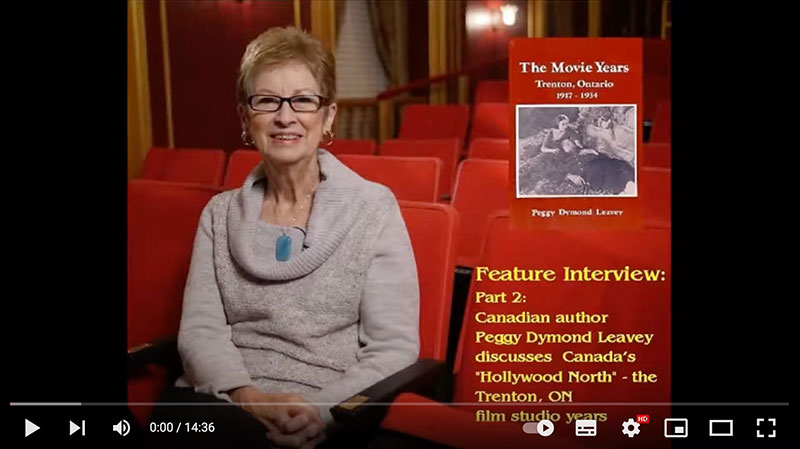
Click here to read an excerpt from the book
Excerpt from
The Movie Years – Trenton, Ontario 1917-1934
One wonders what life in Trenton, Ontario might have been like today had predictions made in the early part of this century come true. For Trenton was to be the “Hollywood of the North.”
Very little remains now of her brief venture into the world of film-making, It lasted only 17 years, from 1917 to 1934. The street where the film studio stood is still called Film Street, but the rest has passed into history, preserved only in the memories of the few still living who can recall those colourful years.

